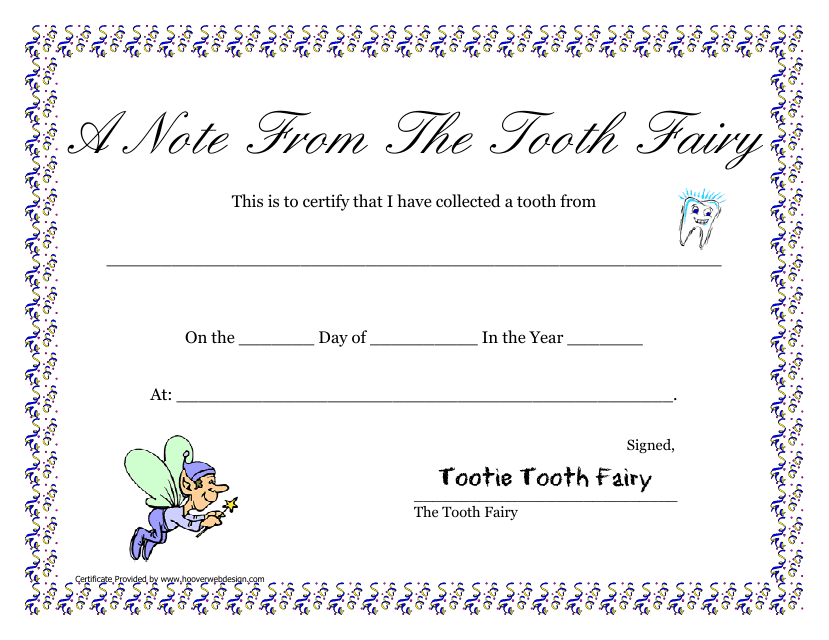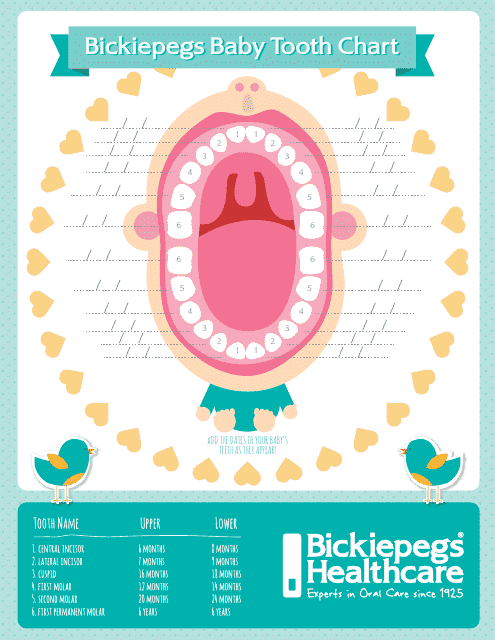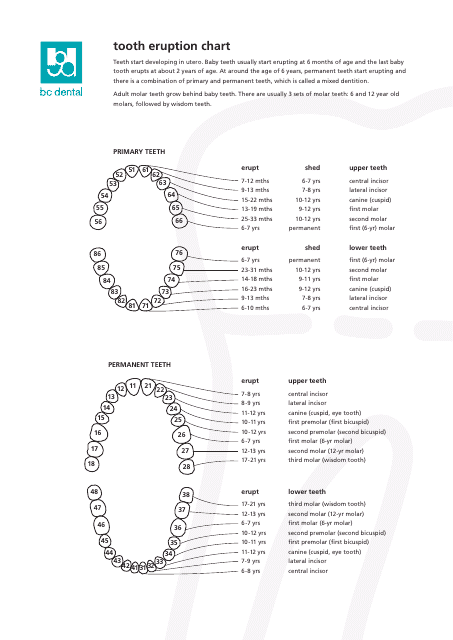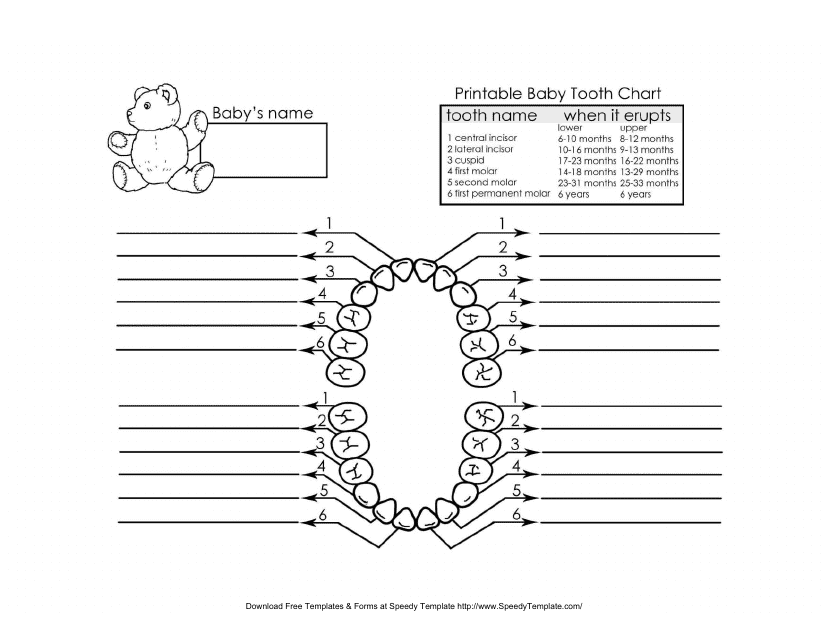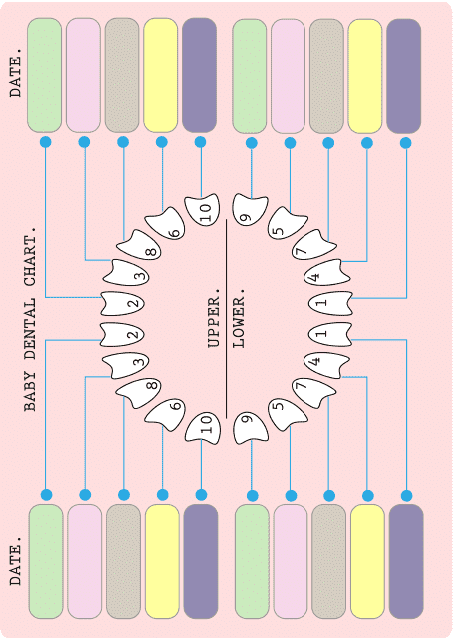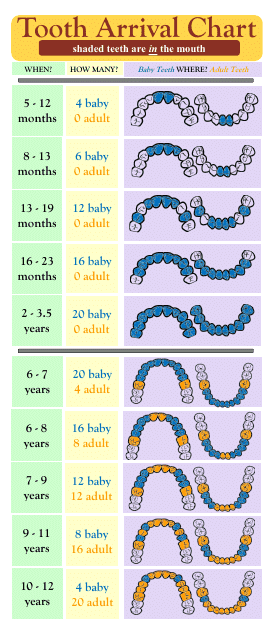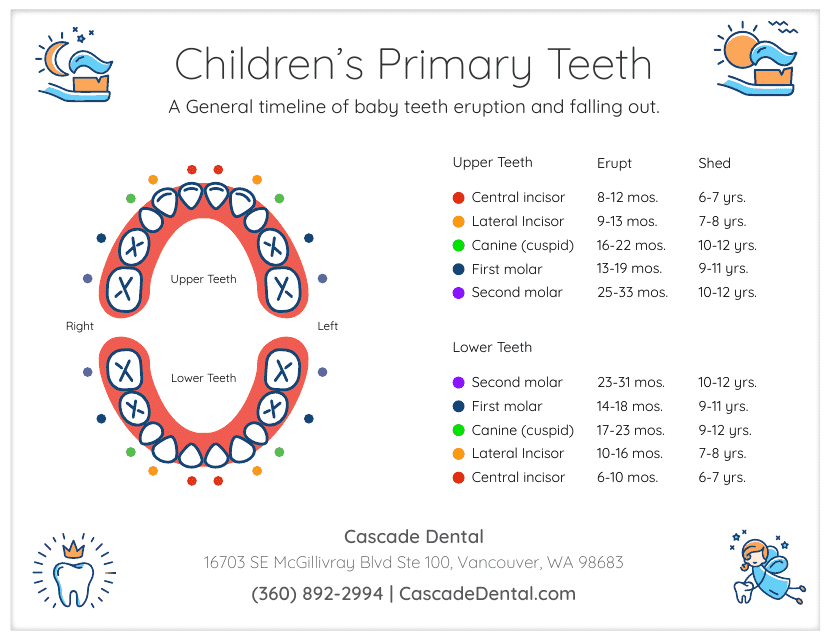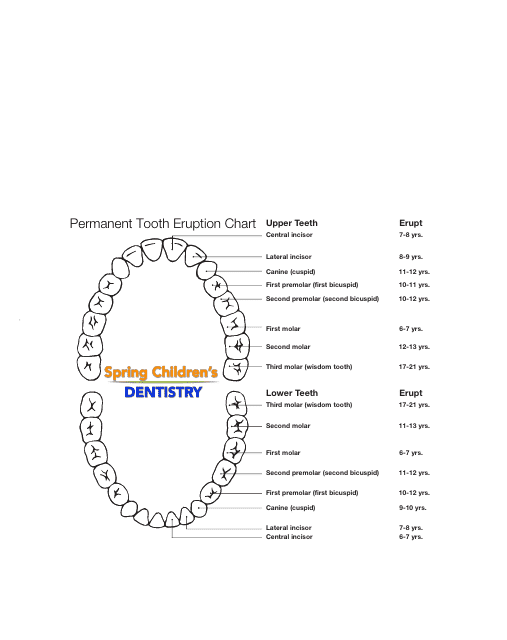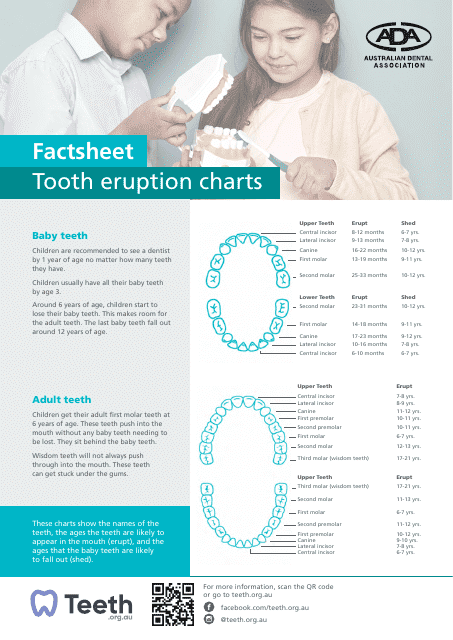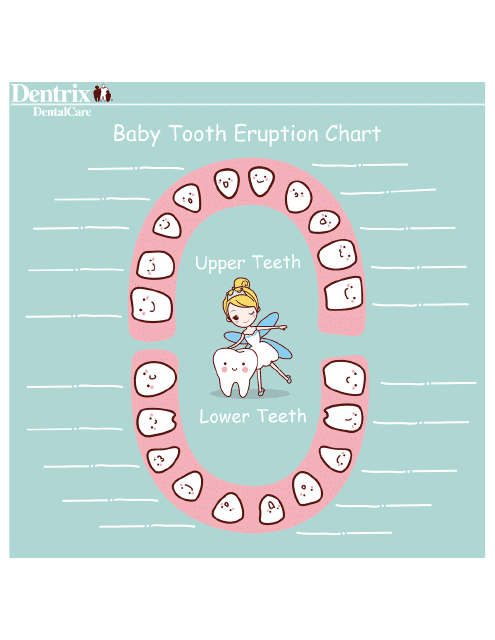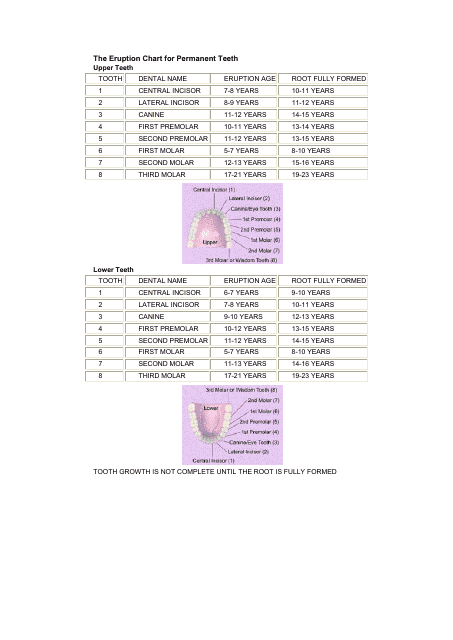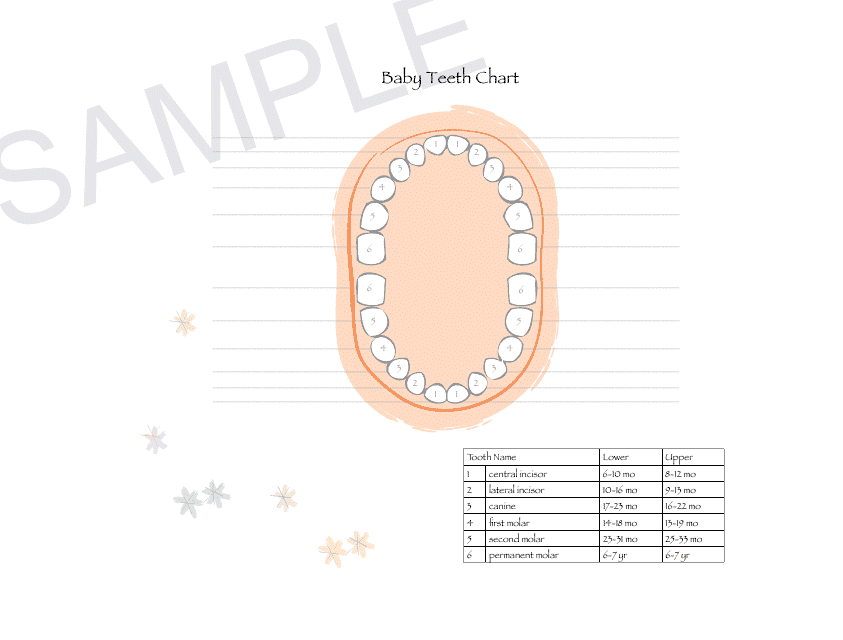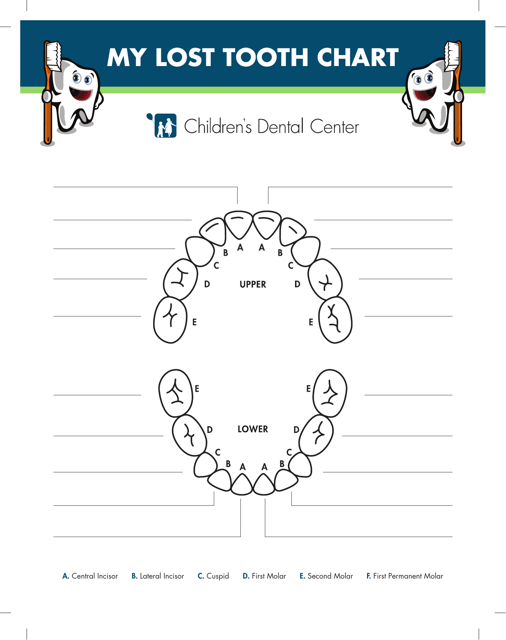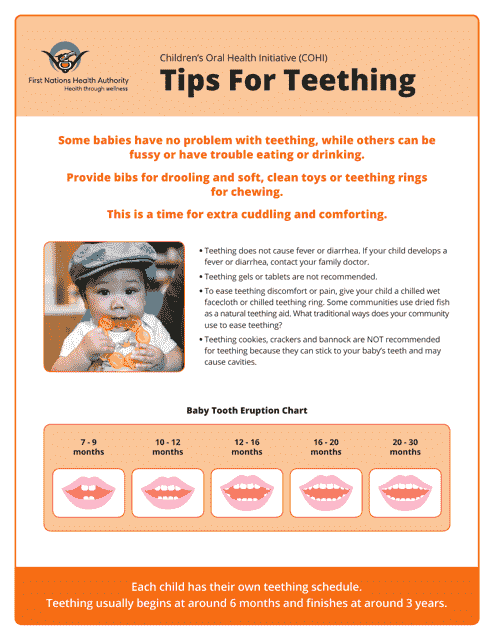Free Tooth Eruption Chart Templates
Tooth Eruption Chart: What Is It?
A Tooth Eruption Chart serves as a visual display of the stages of teeth development and stages of tooth eruption. It demonstrates the way in which teeth erupt within the mouth as well as the amount of time that every tooth needs to grow.
Understanding and monitoring the trends in a child's tooth eruption process can reveal important details about the emergence of baby teeth and indicate potential problems such as delayed tooth eruption.
Alternate Name:
- Teeth Eruption Chart.
It's crucial to remember that not every infant will adopt the conventional tooth eruption schedule. It's possible for one infant to have an eruption of the first tooth before another even if they are the same age. The behavior and development of every toddler's jaw varies, resulting in different schedules.
Tooth eruption occurs twice throughout the life of a human. The first usually takes place as early as six months old in babies where “milk teeth” begin to appear and this continues until the child is approximately 2.5 years old. Then, usually from around age six, these teeth begin to shed and this continues until a child is approximately 12 years old. After this, the shed teeth are replaced by permanent teeth which can gradually develop until the early 20s.
For a full list of Teeth Color Chart templates please feel free to check out our library below.
How Long Does Tooth Eruption Take?
There are a total of two stages during eruption and they are known as:
- The pre-eruptive phase, when the teeth have not yet erupted . Changes in the jaw occur which causes expansion inside the jaw and as the baby's bones develop, they find more space to do so;
- Eruptive Phase: a tooth enters this phase when it has started to erupt in the mouth of a baby . The teeth start to break through the gum at this point. As it penetrates the tissues to create space for the tooth, it can have small wrinkles or protrusions on the surface. Each infant develops at a different rate between these two stages.
The stages of eruption are outlined below:
- A baby's bottom middle incisors tend to emerge first, accompanied by the top middle incisors. They are the teeth located in the center of a baby's mouth, adjacent to one another;
- These teeth typically start to emerge four to six months prior to a child turning one and finishes after approximately 18 months;
- The four canines typically emerge during the same moment as the incisors, however, it is possible for them to come in a little later;
- The teeth just behind the incisors, the bottom canines, typically emerge in the end stages;
- Six of the molars typically emerge between the ages of three and five.
Permanent teeth usually take a while to erupt in the mouth, longer than milk teeth would, which erupt and fall out as required. The final molars known as the wisdom teeth can appear in early adulthood.
Still looking for a particular template? Take a look at the related templates below:
Documents:
19
This type of document is a black-colored certificate template that can be used to create a note from the Tooth Fairy. It is a fun and creative way to celebrate losing a tooth and leaving a special message for the child.
This document is a Baby Tooth Chart provided by Bickiepegs. It is used to track and record the eruption of a baby's teeth.
This document provides a tooth eruption chart, showing the order and timing of the growth of primary (baby) teeth in children.
This document provides a chart that shows the order in which a child's primary teeth usually erupt.
This baby tooth chart is a visual guide that shows the order in which a child's baby teeth typically erupt and fall out. It is a helpful tool for parents and dentists to track the growth and development of a child's teeth. The chart is presented in a black and white format, making it easy to print and use.
This document provides a visual representation of a baby tooth chart, which shows the sequence and timing of a child's primary (baby) teeth coming in and falling out.
This document is a dental chart specifically designed for babies. It helps track the growth and development of their teeth.
This document is a tooth arrival chart that displays the order in which baby teeth typically emerge in children.
This chart shows the order in which children's primary teeth erupt and fall out. It helps parents track their child's dental development.
This document is a chart that shows the sequence and timing of primary tooth eruption in children. It helps parents and dental professionals track the development of a child's primary teeth.
This chart displays the timeline for the eruption of permanent teeth in children. It helps track the development of permanent teeth in relation to age.
This document provides a visual guide and timeline of when a child's baby teeth and adult teeth typically emerge. It is used by parents, dentists, and healthcare providers to track the growth and development of a child's teeth.
This document provides a teeth chart for parents to track the growth and development of their child's teeth. It is a useful tool to help parents ensure proper dental care for their children.
This document provides a tooth eruption chart for children's dental health. It shows the order and timing of their teeth coming in.
This document provides a visual guide to the timing of when a baby's teeth start to come in and shed. It is helpful for parents to track their child's dental development.
This document provides a chart showcasing the order and timeline of permanent teeth eruption in children.
This document provides a chart showing the order and timing of baby teeth eruption.
This document is a Lost Tooth Chart, used by the Children's Dental Center to track and record a child's lost teeth.
This document provides a chart that shows the normal sequence of baby tooth eruption. The chart is used by the First Nations Health Authority to monitor the oral health of children in First Nations communities.

